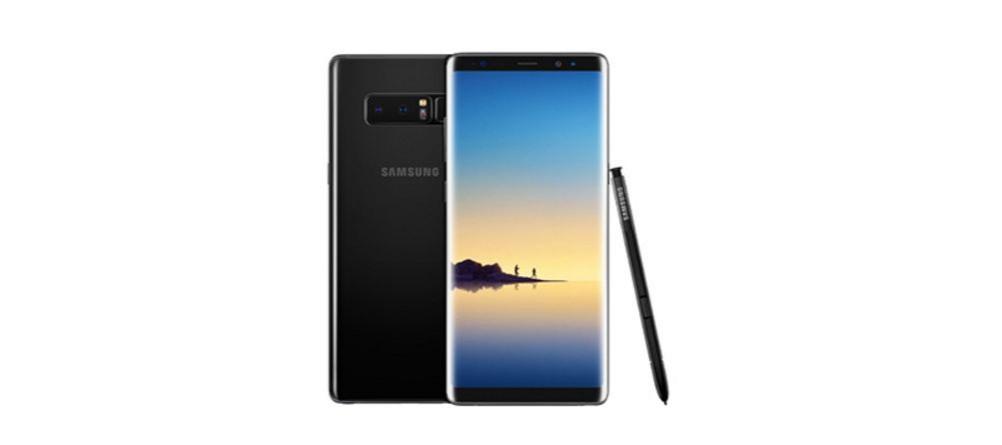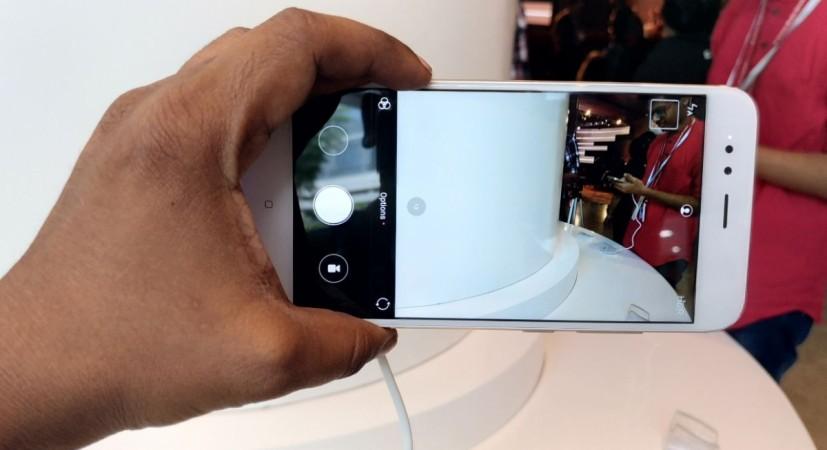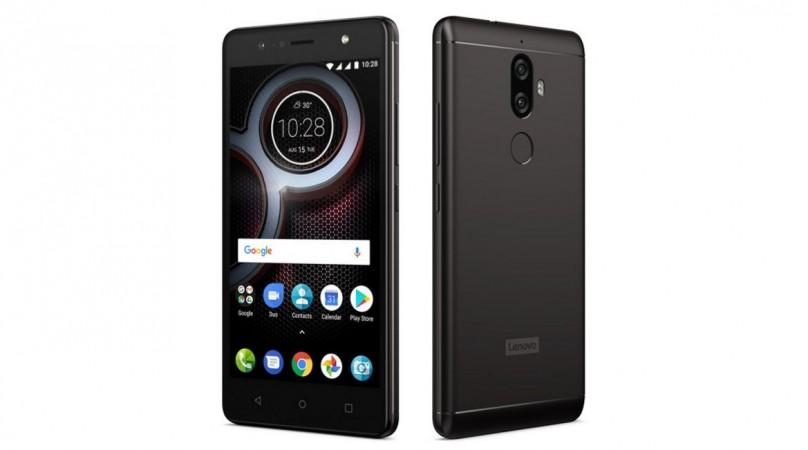The Indian market witnessed mid-range and budget phones such as Moto G5s series, LG Q6, Micromax Canvas Infinity in August, and September saw the release of several high-profile phones ranging from Apple and Samsung to Xiaomi and Asus.
If you are planning to buy a new phone, it is the best time to get one for yourself or gift it to your loved ones during the upcoming Diwali festival. To provide a better perspective, we have curated latest top-rated phones with key features like advanced cameras, processor and more.
Also read: Honor 8 Pro review: Mid-range priced phone with an impeccable camera
Here are top 6 smartphone series that hit stores in India in September 2017:
Samsung Galaxy Note8:
Samsung Galaxy Note8, which was adjudged the 'Gadget of the Year' at the recently concluded India Mobile Congress (IMC) hit stores on September 21 for Rs. 67,900.
It flaunts a gorgeous 6.3-inch super AMOLED screen with Infinity Display feature, that makes the screen cover more than 75-percent of the front-panel offering rich viewing experience and also improving exterior looks by several notches compared to previous generation model or any other phone in the market, for that matter.
As far as the photography is concerned, Galaxy Note 8 comes with top-of-the-line camera hardware. It houses dual-camera system, one 12 MP primary camera (Wide-angle lens with f/1.7 aperture and dual-pixel autofocus) and a 12 MP Telephoto camera (f/2.4 aperture and 2x Optical Zoom) with OIS (Optical Image Stabilisation), and on the front, it features equally impressive a wide-angle 8MP snapper with f/1.7 aperture.

It also comes with new S Pen with improved pressure sensitivity and more features. One notable aspect is the Screen off memo, that allows the user to take up to one-hundred pages of notes as soon as they remove the S Pen, pin notes to the Always On Display (AOD) and make edits directly from the AOD, as well.
Read more: IMC 2017: Samsung Android flagship Galaxy Note8 wins 'Gadget of the Year' award
Apple iPhone 8 series:
The new Apple iPhone 8 and the iPhone 8 Plus are priced in the range from Rs. 64,000 to Rs. 86,000.
The key improvements are that the incorporation of the glass design, which makes the device look glossy and this can in turn to be a problem, as there are chances of the devices getting finger-print smudges, provided it has an oleophobic coating, which the company has not confirmed so far.

Another notable aspect is that iPhone 8 Plus' dual camera supports AR (Augmented Reality). Each camera is individually calibrated, with new gyroscopes and accelerometers for accurate motion tracking. AR benefits from new A11 Bionic, which handles world tracking, scene recognition and incredible graphics at 60fps, while the image signal processor does real-time lighting estimation. Apple iPhone 8 Plus' front camera will get Portrait Lighting mode support via software update before the end of 2017.
Apple has also incorporated the much need wireless charging capabilities in both iPhone 8 Plus and the iPhone 8 and they also support fast charging, which according to the company, the devices can charge up to 50% within 30 minutes.
Read more: Complete specification and price details of Apple iPhone 8 series in India
Nokia 8:
It is priced Rs. 36,999 and flaunts a 5.3-inch QHD(2560x1440p) IPS LCD screen with Corning's latest and sturdiest Gorilla Glass 5 shield and splash-proof IP54 touch monoblock with capacitive system keys.

The main attribute of the Nokia 8 is its camera hardware. It boasts two cameras — one a 13MP (Colour + OIS: Optical Image Stabilisation) another a 13MP (Mono). They come equipped with 1.12µm pixel size, f/2.0 aperture, 76.9-degree, PDAF (Phase Detection Auto Focus), IR (infrared) rangefinder and 4K video recording, all assisted by dual-tone flash for good quality images under low-light conditions.
On the front, it boasts an equally impressive 13MP snapper with PDAF, 1.12µm pixel size, f/2.0 aperture, display flash and a 78.4-degree field of view, which is enough to get big group selfies.
Another praiseworthy aspect of Nokia 8's camera capabilities is the new feature "Bothie". Don't mistake it for the Bokeh blur effect: The new Bothie is completely different.
It allows users to record videos and take images simultaneously from the front and the back via Dual-Sight mode.
Device owners can also live-stream front-back videos with split-screen on Facebook. We believe this feature will be a huge hit among social media-savvy millennials.
Read more: Complete specifications and availability details of Nokia 8 in India
Xiaomi Mi A1 (Rs. 14,999):
The new Mi A1 is developed by Xiaomi in collaboration with Google and sell it as the mid-range Android One series. It houses same internal hardware and design language as seen in the Mi 5X, but will run pure Android OS instead of custom MIUI.

Besides the pure Android OS, another noteworthy attribute of the Mi A1 is it camera hardware. It comes packed with two 12MP OV series shooters, one with a wide-angle lens and another with Telephoto lens. With dual-camera, the Mi A1 will be able to offer Bokeh effect photo feature and optical zoom. It also comes with dual-tone LED flash, which will help it capture good quality images under low-light conditions.
Also read: Xiaomi Mi A1 first impression: Premium Android One we've all been longing for
Asus Zenfone 4 Selfie series:
Asus launched three variants — Zenfone 4 Selfie Pro (ZD552KL), a generic Zenfone 4 Selfie DC (ZD553KL) and a low-end single front-camera based Zenfone 4 Selfie (ZB553KL).
The top-end Zenfone 4 Selfie Pro (Rs. 23,999) features a pair of 24MP DuoPixel lens (12-megapixel x 2 SONY IMX362 sensor), and a 5MP wide-angle lens on the front with 120-degree field-of-view. The phone also features a 16MP PDAF rear camera with LED flash, and supports 4K UHD video recording for both front and rear cameras.

The Zenfone 4 Selfie Pro is powered by the Qualcomm Snapdragon 625 octa-core chipset, and it comes with 4GB of RAM and 64GB of onboard storage.
Also read: Asus Zenfone 4 Selfie Pro quick review: Promising camera phone in its class
The Zenfone 4 Selfie (Rs. 14,999), on the other hand, comes with a combination of the 20MP standard sensor along with an 8MP wide-angle lens with 120-degree field-of-view. It also sports a 16MP PDAF read camera with LED flash and is powered by the Qualcomm Snapdragon 430 octa-core processor.

On the other hand, the low-end Zenfone 4 Selfie (Rs. 9,999) houses a 13MP single selfie camera with a 140-degree panoramic view. It also comes with a 13MP PDAF rear camera with LED flash.
It comes packed with Qualcomm Snapdragon 430 octa-core chip, coupled with 3GB of RAM. The phone, however, is packed with 32GB of ROM with MicroSD card support up to 2TB.
Lenovo K8 Plus:
Lenovo's new K8 Plus runs stock Android OS with no pre-loaded apps. The phone is powered by MediaTek Helio P25 octa-core, which can clock a top CPU speed of 2.6 GHz, with 3GB RAM, 32GB storage (expandable via micro SD card) and a 4,000mAh battery.
The K8 Plus also houses feature-rich dual-camera, a 13MP with Purcell Plus sensor and a secondary 5MP snapper with Samsung Depth sensor having f/2.0 aperture, Largen Precision 5-Element Lens, professional mode and Depth mode.

On the front, it comes packed with an 8MP shooter with dedicated LED flash, 84-degree wide lens and f/2.0 aperture.
Lenovo K8 Plus comes with a dedicated physical button on the right side of the phone's edge to launch the music app.
Read more: Complete specifications and price details of Lenovo K8 Plus
Stay tuned. Follow us @IBTimesIN_Tech on Twitter for latest smartphone launches.









